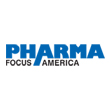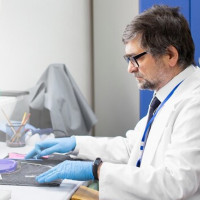The Discovery of New Antimicrobials: What Needs More Focus?

Strong 8k brings an ultra-HD IPTV experience to your living room and your pocket.
In the past few decades, antimicrobial resistance (AMR) has emerged as a worldwide problem. Thus, several alternatives are being explored. However, only 12% of the clinically tested drugs can reach the market. In this regard, there are certain issues that need to be addressed for a better search strategy.
Recently, AMR has seen a high surge worldwide leading to a major problem in the healthcare sector. There has been an immense increase in morbidity and mortality rates due to AMR. In this regard, several new antimicrobial agents as well as technologies are being tested including antibiotics, antimicrobial peptides, and plant secondary metabolites, nanomaterials, photodynamic therapy, CRISPR-Cas and many more. These can be categorized as natural, synthetic and semi-synthetic based on their source. The era spanning from 1950 to 1960 can be described as the pinnacle of antibiotic exploration, given that half of the medications widely employed today were identified during this timeframe. However, several challenges were faced post this period, especially due to multi-drug resistance in bacteria. The question is ‘are we waiting for another golden period or have we lost hope?’
If we go back to the history of antimicrobial discovery, it becomes evident that most antimicrobials or antibiotics that were discovered and brought into use were identified from either bacteria or fungi. Many other antibiotics were derived from the parent antibiotics that were identified naturally. Although the first synthetic antibiotic, Chloromycetin, was discovered in 1950, the rate of success of synthetic leads is much slower than derived or natural antibiotics. Synthetic antimicrobial compounds are designed by using computer algorithms followed by validation through in vitro and in vivo experimentation. In most cases, only one or no lead molecule can be obtained from screening of thousands of designed molecules which substantially leading to loss of time, effort, capital etc. Also, most computationally designed molecules does not mimic actual molecule properties and show toxicity and multiple side-effects.
In this view, naturally identifying or deriving these antibiotics is a better idea. Identification of a natural antibiotic and its relative is also important for synthetic discoveries which derive its inspiration from the natural structures itself. But where we are lacking in natural identification of such compounds is a question that needs to be answered. In the view of generating multiple synthetic leads many of us have forgot to seek inspiration from the natural leads. Also, there is a lack of exploration of different environments for the several antibiotic producing strains of bacteria. The same bacteria may express a BGC (Biosynthetic Gene Cluster) in one environment and not in other. The evolution of a bacterial species depends on its environment and so what environment it grows in will affect the antibiotic-producing genes it express. There is also a need for in-depth exploration of a particular environment (air, water, soil, manure, etc.) for all the species surviving in it and what secondary metabolites they are producing. Multiple sampling of such an environment over the period of time can help in this finding a solution. Exploring soil or water from different regions or areas will further add to depth of the research because the environmental conditions and the surroundings affect what organisms grow together and how they behave (surroundings’ effect).
This is why inducing the expression of BGCs is a key strategy in the field of synthetic biology and biotechnology. BGCs are clusters of genes responsible for the synthesis of bioactive compounds, such as antibiotics, antifungals, and other natural products. Manipulating the expression of these gene clusters allows scientists to harness the potential of these compounds for various applications, ranging from drug discovery to agricultural and industrial uses. Unlocking microorganisms' potential for bioactive compounds depends on strategically inducing BGCs. Often dormant in labs, these clusters, when induced, reveal a wealth of natural products. This unlocks innovation, yielding diverse bioactive compounds applicable in medicine, agriculture, and industry. Inducing antibiotic-producing BGCs addresses global antibiotic resistance, offering alternatives against drug-resistant pathogens and broadening the chemical diversity of synthesized metabolites for expanded applications. Illustrating this concept is the penicillin biosynthetic pathway, a classic example of a BGC. In the fungus Penicillium chrysogenum, key genes within the penicillin BGC, such as pcbAB, pcbC, and penDE, orchestrate the synthesis of penicillin. The induction of this BGC has been pivotal in optimizing penicillin production, offering a historical and practical illustration of the impact of induced BGC expression. Beyond laboratories, inducing BGC expression in natural environments elucidates ecological functions of synthesized bioactive compounds, enriching our understanding of microbial interactions and adaptation strategies. The pivotal role of induced BGC expression extends to biotechnological applications, fostering the development of microbial cell factories for sustainable production in industries related to bio-based chemicals, pharmaceuticals, and valuable compounds. Studying induced expression provides insights into regulatory mechanisms governing BGCs, enabling precise manipulation. Inducing the expression of BGCs involves a multifaceted approach employing various methods. Cultural conditions play a pivotal role, with alterations in temperature and pH impacting BGC expression, especially in temperature-sensitive clusters. Moreover, modifying nutrient availability in the growth medium can trigger the activation of silent or low-expressed gene clusters. Co-culturing strategies, inspired by the surroundings’ effect harness microbial interactions, where different strains exchange signalling molecules, such as quorum-sensing molecules, or engage in inter-kingdom signalling, inducing BGC expression. Genetic manipulation techniques, including the overexpression of regulatory elements through strong promoters or the introduction of additional activator genes, enhance transcription of biosynthetic genes. The precision offered by CRISPR/Cas9 technology allows targeted modifications within BGCs, such as deleting or modifying repressor elements or introducing activating mutations. Heterologous expression involves transferring BGCs into more genetically tractable hosts, enabling controlled expression in environments with well-characterized genetic tools. Coupling heterologous expression with synthetic biology approaches facilitates the design of custom pathways for desired compound production, providing a high degree of control over BGC expression. Combinations of these methods are often employed to optimize BGC induction, considering the specific characteristics of the target gene cluster, the host organism, and the desired level of control. As technology advances, researchers continue to innovate, unlocking the vast potential of natural product biosynthesis for applications in medicine, agriculture, and industry. However, we need more research in this area.
Thus, we can say that antibiotic resistance is a global health problem and is a serious concern among health care sectors to find not only an alternative but a long lasting solution to the problem. In most cases, repeated use of antibiotics or inappropriate use leads to developing resistance and this problem is growing from one antibiotic to another by the same species. Since, synthetic antimicrobial compounds may cause toxicity, requires enough capital for its development as well as testing, therefore natural product antimicrobial compounds can be an lasting solution to overcome this situation and also to speed up in discovery of more potent antimicrobial compounds. Natural products are generally less toxic and effective against pathogens. Natural compounds of micro-organisms can be easily obtained from culture in laboratory and purified for therapeutic use. More synthetic biology efforts in the direction of co-culturing different organisms together or growing an organism under different environmental conditions to express unlocked BGCs is the need of the hour. Lastly, man must remember to learn from past and from what nature provides.
Visit now: https://www.pharmafocusamerica.com/articles/the-discovery-of-new-antimicrobials-what-needs-more-focus
Note: IndiBlogHub features both user-submitted and editorial content. We do not verify third-party contributions. Read our Disclaimer and Privacy Policyfor details.


